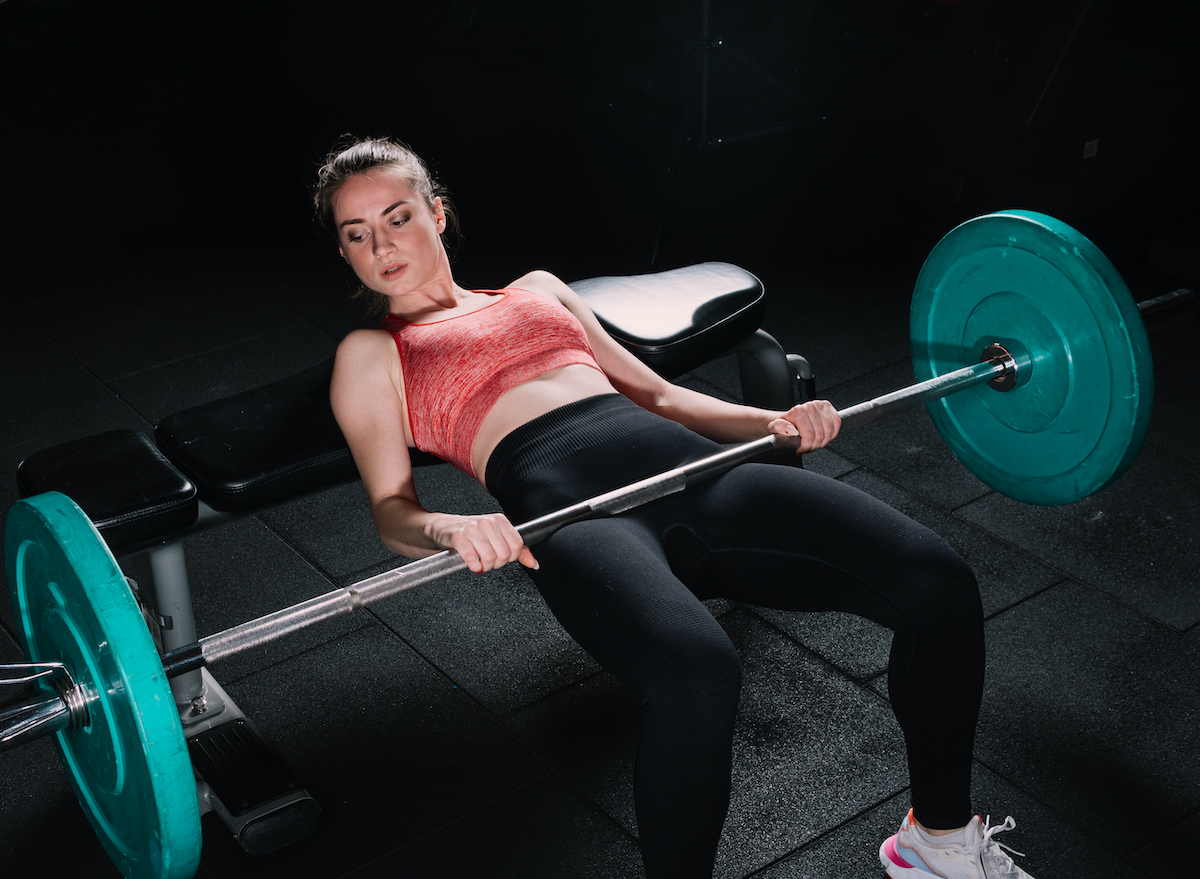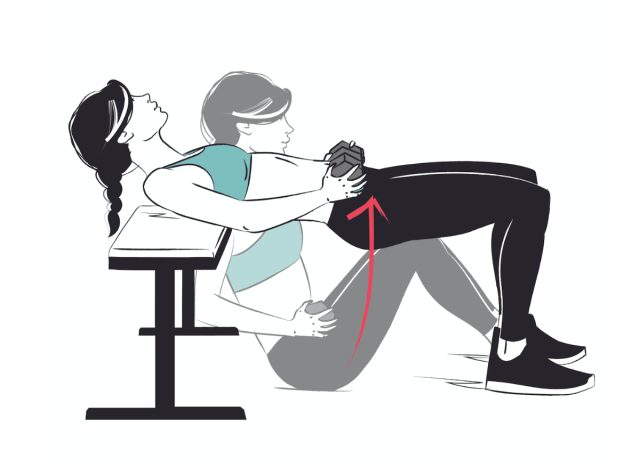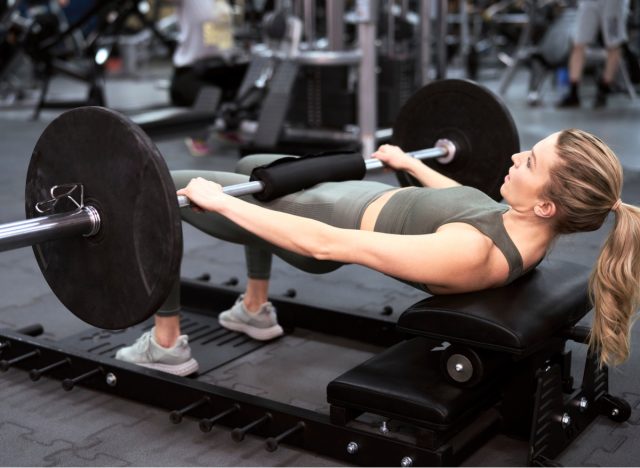Here’s How to Ace the Hip Thrust for Stronger Glutes, Trainer Says

Everyone knows you should exercise regularly to support good health and longevity. But sometimes, your only motive for going to the gym may be to build a toned, round butt that looks good and helps keep you feeling strong and healthy. There’s one exercise in particular that’s especially effective when you’re looking for sculpted glutes: the hip thrust. To learn all about this booty-building movement, we chatted with Kate Meier, CPT, a certified personal trainer with Gym Garage Reviews, who dishes out five essential tips regarding how to do a hip thrust to help transform your backside.
“Hip thrusts are beneficial because they work the posterior chain, which includes the muscles running up and down your back, such as your glutes, hamstrings, and back muscles,” explains Meier. “A strong posterior chain is the base of many movements and can help prevent injury no matter your fitness style. Also, hip thrusts are a great movement for glute development, making them increasingly popular for those looking to build bigger, stronger glutes.”
Read on to find out Meier’s top-recommended tips for acing hip thrusts so you can help grow your glutes and avoid the dreaded saggy butt, and next, make sure you check out This Effective Glute Workout Will Get Your Butt Into Shape, Trainer Says.
Here’s how to do hip thrusts:

Before diving into the nitty-gritty of performing hip thrusts, it’s wise to understand the movement.
“Start seated on the floor with your knees bent and your upper back resting against the long side of a weight bench. If using weight, place the dumbbells or barbell on your hips. Hold the bar to keep it on your hips, and squeeze your glutes as you raise them off the floor,” Meier instructs.
Once your knees are bent at roughly 90 degrees and your hips are fully raised, pause for one to two seconds. Next, lower your hips slowly until your glutes are just above the floor. Finally, push the weight back up with your hips and aim for eight to 10 reps of a moderate to heavy weight.
Take it slow.
“Hip thrusts are an exercise that many lifters like to go heavy with, but start out with the basics,” advises Meier. “Master the form with your body weight first, then move up to dumbbells or light barbells before you start throwing plates onto a barbell for hip thrusts.”
Take heed of Meier’s advice to avoid injuries as you strengthen your core and lower body with this stellar exercise. Plus, gradually increasing weight will help you focus on your form and perfect the movement.
Focus on the eccentric.
Many muscle gains are found in the eccentric (lowering) phase of lifting exercises, and hip thrusts are no exception to this golden rule of strength training.
“As you lower down, your glutes are constantly under tension and therefore work harder if you spend longer in this portion of the movement,” says Meier. “Try counting to yourself during the eccentric phase to make sure you take your time and get the most out of the exercise. Also, take less time on the way up to build explosive strength in your glutes and hips. This strategy can work with any exercise, from biceps curls to squats and more.”
Make sure you’re set up comfortably.

Since setting up for hip thrusts can be awkward, ensure you’re in a safe and comfortable position before starting. For example, many people perform hip thrusts with their shoulders supported on a bench, which requires stability, balance, and core strength. Depending on your size and the height of the bench, this could mean resting different areas of your upper body on the bench.
“Some individuals will be more comfortable with just the top of their upper back on the bench, while others may find that positioning themselves with their upper-middle back on the bench is more stable and comfortable. Additionally, your feet should always be flat in the starting position for this exercise,” says Meier.
Give your glutes a rest.
When you find a new exercise you love, it’s understandable to want to hit it at every workout. Unfortunately, doing so may result in overtraining, fatigue, or (even worse) injury. That’s why it’s essential to allow for proper recovery and give your glutes time to rest between workouts.
“After a rigorous glute-focused workout, make sure you take a day or two to rest and feel fully recovered before jumping into another difficult workout for the same muscle group,” Meier recommends. “Instead, do light activity or stretching between workouts to target those muscles while allowing for recovery.”








